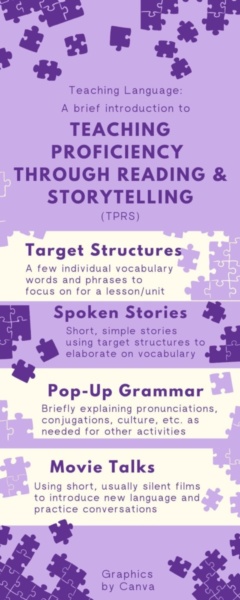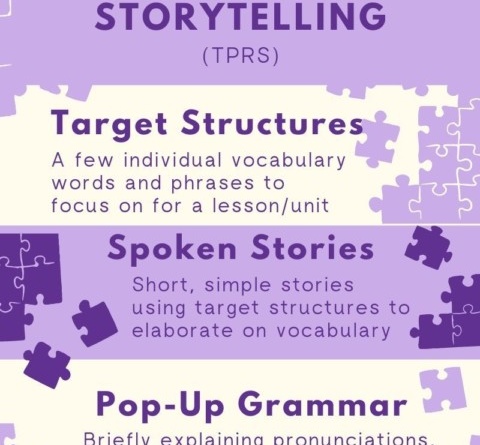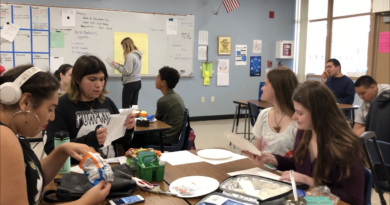Fluency is not the goal, language teachers agree
By Bridget Nagle,
BlueDevilHUB.com Staff–
Davis language teachers agree that complete fluency generally is not achievable with the time given across a six-year course.
Mele Echiburu has been teaching for 29 years, and is currently teaching Spanish 2 at Emerson. She also instructs seventh graders from the immersion programs at Marguerite Montgomery Elementary School and Caesar Chavéz Elementary School.
She was trained in a teaching method called TPRS, or Teaching Proficiency through Reading and Storytelling, a language teaching system created by author and Spanish teacher Blaine Ray.
This method focuses on using primarily stories and reading to increase language input for students and break away from traditional textbook-style teaching.
“I believe you have to be passionate about it,” Echiburu said. “I make sure that whatever they’re reading or whatever I’m saying is at their level, and it’s something interesting, which is what I found hard with the textbook.”
After 22 years of using looser styles of teaching in elementary-level immersion classes at Chavéz, Echiburu started teaching Spanish classes at Emerson, where she found learning progress was slowed by the use of a textbook. “They knew in their head how to conjugate a verb, but they didn’t know how to use it in context,” Echiburu said.
She encourages students to first learn how to use a language in conversation and real scenarios, then expand in later classes on grammar and the structure of the language in the same way that a first language is learned.
“There is a place for teaching grammar,” Echiburu said. “I believe you have to acquire it first through lots of input, and then learn about it.”
James Curley teaches French 1 through 5 at DHS, as well as one Spanish 2 class. He takes a similar approach to Echiburu, focusing more on communication and engaging the students than strictly following the textbook.
“If I can get the students practicing, for a maximum amount of time, in that lesson period, reading, writing, speaking and listening, all four skills, that will … maximize their language acquisition,” Curley said.
He believes that language classes are limited by the classroom setting. “You can try to make it an immersion situation, it’s just not France, or it’s not Belgium or Canada, it’s a classroom,” Curley said.
“You cannot be fluent in 40 days in a foreign country,” one anonymous Spanish teacher agreed. “It’s not going to happen spread over four years in a classroom with minimally to moderately to a few fully motivated teenagers.”
According to Curley, the expectation most students have for their language skill at the end of a course is a lot more than what he considers achievable. To achieve fluency he believes that students would have to continue their exploration of the language outside of school, preferably in a foreign country.
Curley said that this becomes more difficult with French, as it takes more effort to find the language being used naturally in the area. “Kids kind of have to go out of their way to continue with their practice,” he said.
Curley also believes that this can be just as challenging with Japanese or Chinese classes.
Ronan Tangaan is a senior studying Japanese at DHS, but he took three years of Spanish at Emerson. He says that while he found the Spanish classes to be more slow-paced, his experience with Japanese at DHS has been very productive.
“The first year of Japanese I felt that I learned a ton compared to my middle school’s language classes,” Tangaan said.
Junior Lauren McGilvray is currently in Spanish 5, and has seen both textbook-based and TPRS style learning in her classes. “I like that teaching style where it’s kind of informal and personal, I think that’s the best way to learn language,” she said.
McGilvray is hoping to continue into Spanish 6 next year and take a Spanish Culture minor in college.
Echiburu says that retaining an interest in language and wanting to expand upon the classes taken is one of the goals she has for her students, especially for AP students who have completed the test and have the rest of the year to fill.
Curley agrees that continuing to expand upon the basics presented in language classes is important. “It’s now kind of up to the student to head out there in the world and try to find ways to use the language,” he said.
“We are a stepping stone,” the anonymous Spanish teacher said. “We introduce (and) impart skills and knowledge, and then the student decides where to excel in life.”





